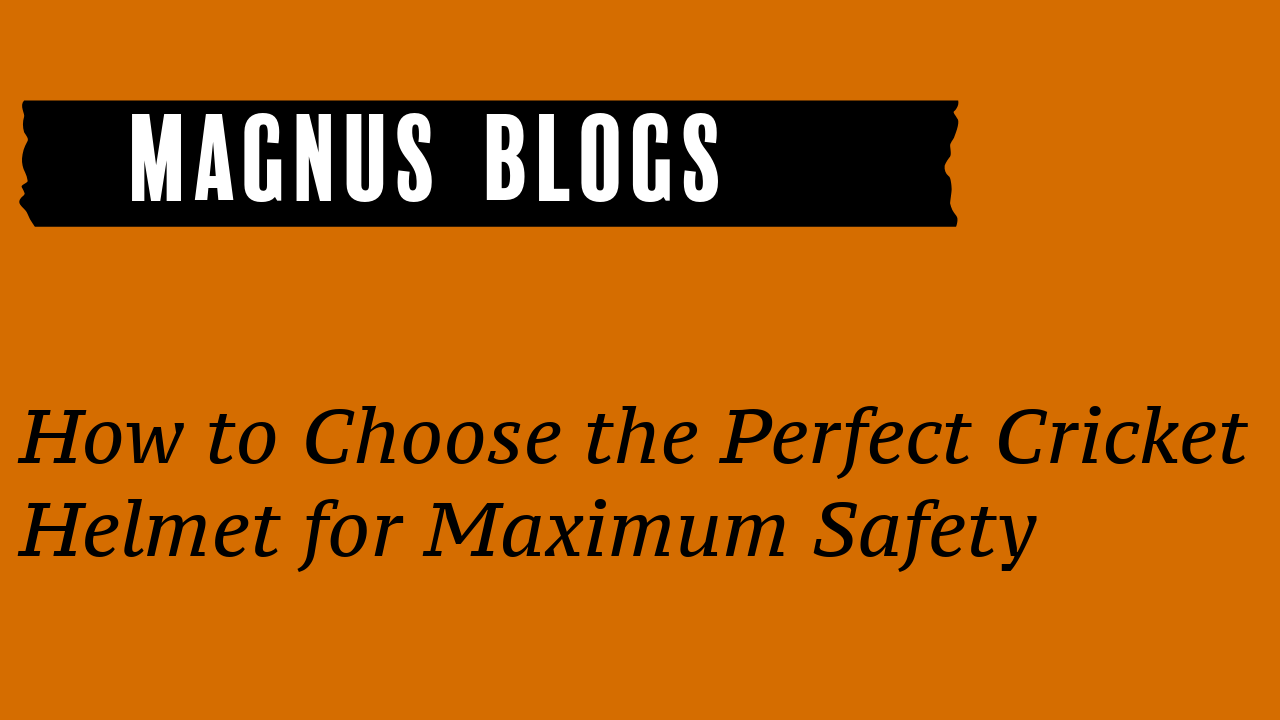A cricket helmet is one of the most essential pieces of protective gear for any player. It’s not just about comfort and fit—it’s about protecting yourself against potentially dangerous ball impacts. With so many options available, knowing what to look for when choosing the right cricket helmet is critical. Here’s a guide to help you make the best choice for maximum safety and comfort on the field.
1. Sizing: Ensure a Secure and Comfortable Fit
The first step to buying a helmet is choosing the right size. A well-fitting helmet should sit comfortably on your head without moving around or causing discomfort. Most helmets are available in sizes ranging from small to extra-large, and some even offer adjustable inner pads or a ratchet system to ensure a snug fit.
- Measuring for Size: Use a measuring tape to find the circumference of your head just above your eyebrows and ears. Match this measurement with the helmet’s sizing guide.
- Fit Check: Once the helmet is on, adjust any straps or inner padding for a snug fit. The helmet should cover the forehead adequately and stay in place when you move your head.
Tip: A helmet that is too tight can cause headaches, while a loose helmet may shift and leave you unprotected. Always prioritize a balanced fit that feels secure but comfortable.
Keywords: Cricket helmet sizing, Magnus Cricket helmets, best cricket helmets USA.
2. Material Quality: Choose Helmets with Strong, Lightweight Materials
Helmets are generally made from high-quality materials like carbon fiber, fiberglass, and ABS plastic. These materials offer a strong, lightweight frame that protects you without adding unnecessary weight.
- Carbon Fiber and Fiberglass: These materials are lighter and provide excellent impact resistance, making them ideal for competitive players who require top-notch protection without added weight.
- ABS Plastic: This material is durable and slightly more affordable, making it a popular choice for beginner to intermediate players.
Tip: Choose a material based on your playing frequency and competition level. Competitive players should consider higher-end materials like carbon fiber, while beginners may find ABS plastic sufficient.
Keywords: Cricket helmet material, lightweight cricket helmet, Magnus Cricket USA.
3. Ventilation: Look for Helmets with Good Airflow
Wearing a helmet for long periods can be uncomfortable, especially in warm weather. To ensure comfort, select a helmet with proper ventilation.
- Air Vents: Look for helmets with multiple air vents around the sides and top. This design promotes airflow, helping to keep your head cool.
- Moisture-Wicking Padding: Some helmets come with moisture-wicking padding that absorbs sweat, keeping you dry and comfortable during play.
Tip: Helmets with good ventilation are ideal for long games, helping you stay cool and focused even in intense conditions.
Keywords: Ventilated cricket helmet, comfortable cricket helmets USA, Magnus Cricket helmets.
4. Face Guard Design: Find the Right Type for Your Role
A cricket helmet’s face guard is critical for protecting the face and neck from the ball. Face guards, usually made of steel or titanium, come in different designs based on the player’s role.
- Steel Face Guard: Steel face guards are strong and affordable, suitable for most players. However, they may be slightly heavier than titanium guards.
- Titanium Face Guard: Titanium is lighter and provides the same level of protection as steel, making it ideal for players who prioritize both safety and mobility.
Face Guard for Batsmen vs. Wicketkeepers:
- Batsman’s Face Guard: A batsman’s face guard is positioned to cover the face and provide visibility. The gap between the helmet and guard should be narrow to prevent balls from passing through.
- Wicketkeeper’s Face Guard: For wicketkeepers, helmets often have a smaller guard to allow better vision and flexibility. Some wicketkeepers prefer lighter headgear that offers good protection without compromising movement.
Tip: If you’re primarily a batsman, focus on a face guard with a narrow bar gap. If you’re a wicketkeeper, consider a helmet that balances protection with a wider field of vision.
Keywords: Cricket helmet face guard, batsman helmet design, Magnus Cricket protective helmets.
5. Safety Certifications and Standards: Prioritize Helmets with Recognized Certifications
Safety standards are essential for ensuring your helmet meets the protection requirements set by cricket regulatory bodies. Look for helmets that comply with international safety standards, such as the British Standard (BS 7928:2013), which is widely recognized in cricket for impact protection.
- British Standard (BS 7928:2013): This standard is widely accepted in professional cricket and ensures that helmets meet rigorous impact and safety criteria.
- International Cricket Council (ICC) Approved: Helmets certified by the ICC are recommended for international and competitive play, as they undergo testing for safety and durability.
Tip: Always choose helmets with reputable safety certifications, especially if you’re playing at a high level. Certified helmets give you peace of mind knowing they’ve been tested for player protection.
Conclusion
Choosing the right cricket helmet is essential for both safety and performance. From finding the right size to selecting a suitable face guard, each feature impacts your overall comfort and protection on the field. At Magnus Cricket USA, we offer a range of certified helmets designed to keep you safe and comfortable, so you can focus on your game with confidence. Explore our selection of cricket helmets to find the perfect fit that meets all safety standards and enhances your performance.
